Maximizing Space: How to Optimize Tank Layout for High-Density Fish Farming?
Are you struggling to fit your fish farming operation into limited space? Want higher yields without needing more land? Modern aquaculture offers solutions for exactly this challenge.
Optimizing tank layout for high-density farming means using space-efficient tanks, often within a Recirculating Aquaculture System (RAS). Smart design improves water flow, waste removal, and gets you more fish per square meter. It's about working smarter, not bigger.
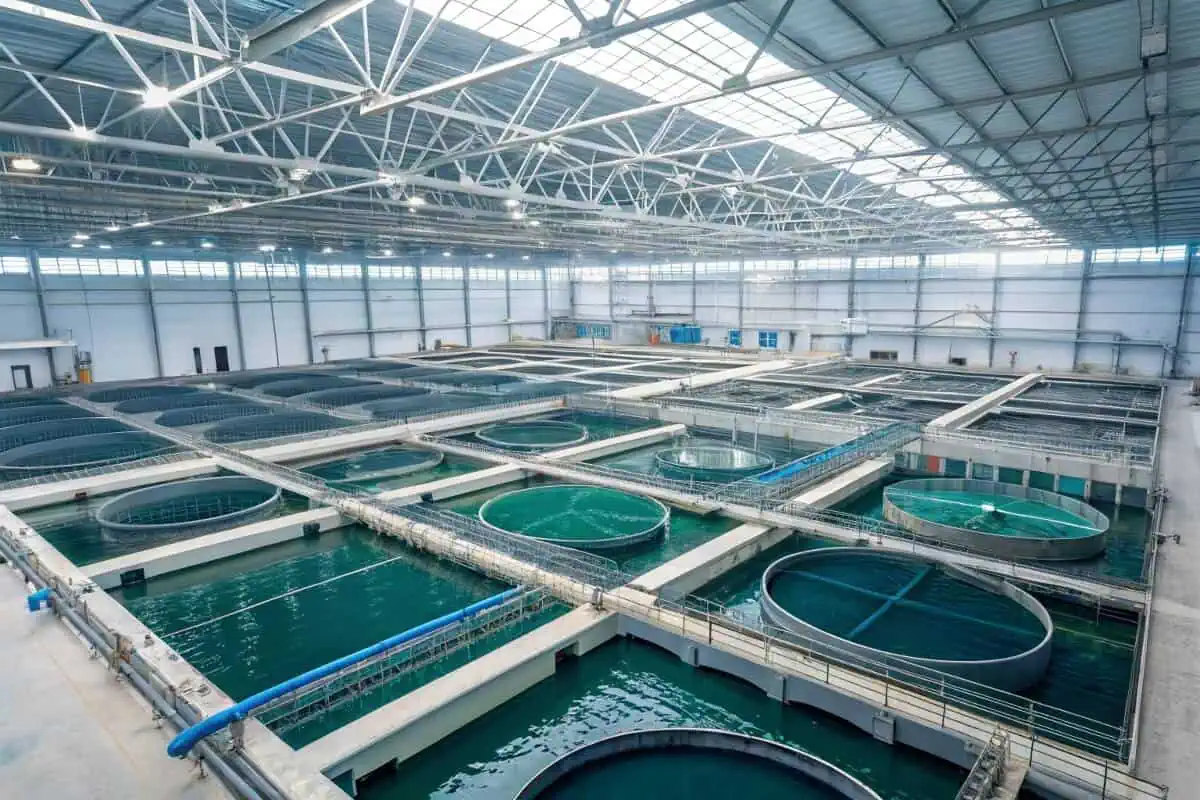
Choosing the right layout and system is crucial when space is tight and production goals are high. Let's dive into the details of how systems like RAS and specific tank choices can help you make the most of your available area. As someone in this industry, I know how important maximizing every resource is.
What is the RAS system for fish farming?
Heard the term RAS but not exactly sure what it involves? Feeling like the technology might be too complex? Let's break down this important concept.
A Recirculating Aquaculture System (RAS) is basically a fish farm that cleans and reuses its water. It uses filters and treatments, allowing lots of fish to grow in less space with very little new water needed.
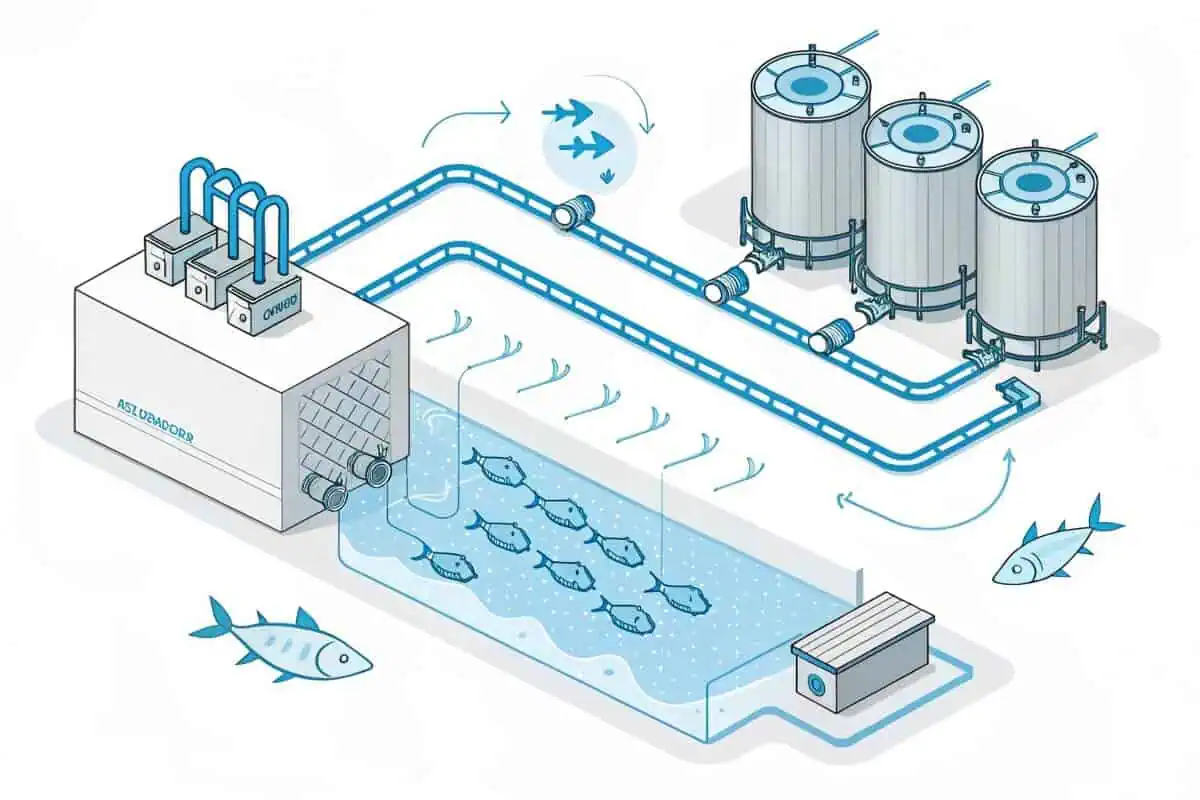
RAS
A Recirculating Aquaculture System1, or RAS, is quite different from traditional fish farming like ponds or raceways. The core idea is simple: reuse water. Instead of constantly replacing water, an RAS continuously cleans and recirculates it. This has several big advantages.
Key Benefits of RAS
First, it saves a huge amount of water. This is critical in areas where water is scarce or expensive. Second, because you control the environment inside, you can place an RAS almost anywhere, even indoors in cities, saving valuable land. You can maintain the perfect water temperature and quality year-round, leading to faster fish growth and predictable harvests. Finally, it offers high biosecurity2. Because it's a closed loop, it's easier to prevent diseases from entering the system.
RAS vs. Traditional Methods
Traditional methods often need large areas of land and lots of water. They are also more exposed to weather changes and potential pollutants or diseases from outside. RAS overcomes many of these limitations, allowing for intensive production in a controlled setting. Of course, RAS requires a higher initial investment in equipment and needs careful management, but the potential for high yields in small spaces is a major draw.
| Feature | Recirculating Aquaculture System1 (RAS) | Traditional Ponds/Raceways |
|---|---|---|
| Water Use | Very Low (High Reuse) | High (Flow-through/Static) |
| Land Use | Low (Compact, Indoor possible) | High |
| Control | High (Temperature, Quality) | Low (Weather Dependent) |
| Biosecurity | High (Closed System) | Low (Open Environment) |
| Initial Cost | High | Lower |
| Density | High | Lower |
Which tank is best for fish farming?
Choosing the right tank type feels like a big decision? Worried about picking one that doesn't fit your space or system? Let's explore the common options.
Round tanks are often favored, especially in RAS, for their good water circulation and self-cleaning ability. But, rectangular or square tanks, particularly flexible ones like ours at Bancy, can use floor space more efficiently in standard buildings.
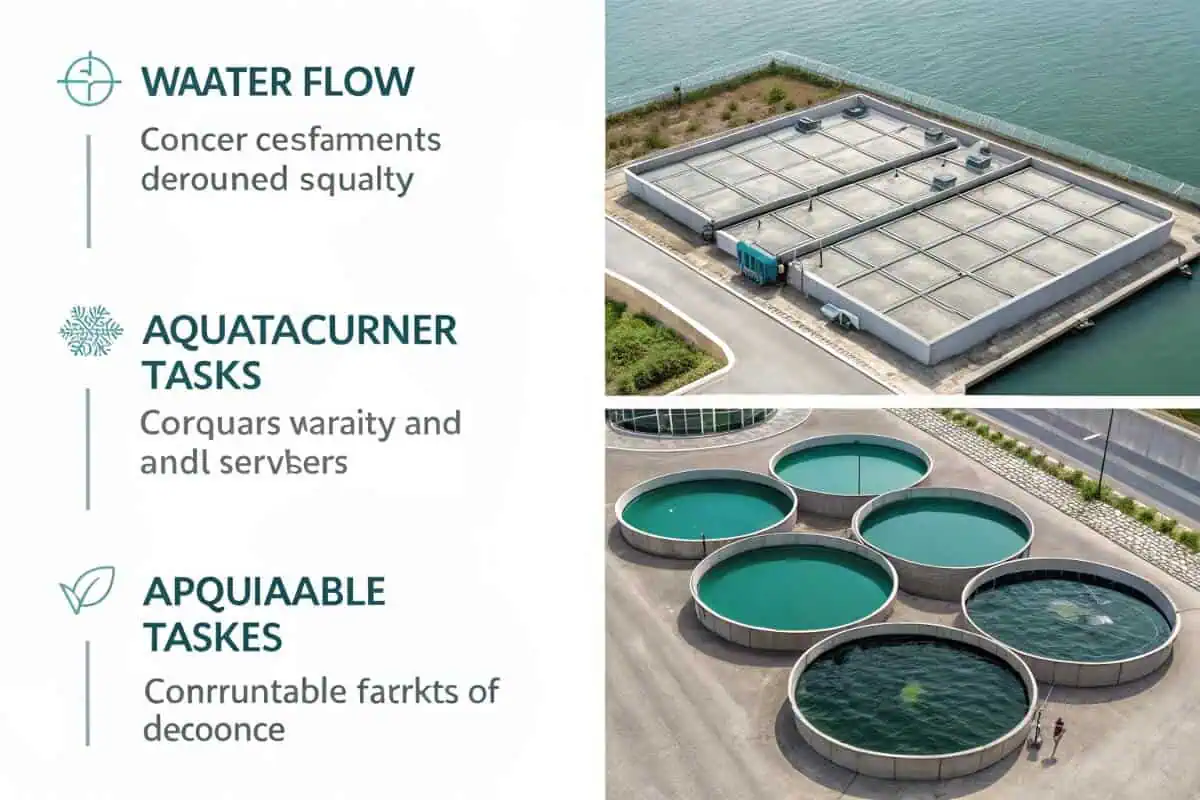
Tank Selection
The "best" tank depends heavily on your specific situation: the system you're using (like RAS), the shape of your building, your budget, and the species you're farming. Let's look at the main types.
Round Tanks3
These are very popular in RAS. Why? Their shape naturally helps create a circular water flow. This flow pushes solid waste towards a central drain, making them somewhat self-cleaning. Good circulation also ensures oxygen is distributed evenly. The downside is that fitting many round tanks into a rectangular building leaves unused space in the corners – they aren't the most space-efficient shape from a layout perspective.
Rectangular or Square Tanks4
These tanks fit neatly into rectangular buildings, maximizing the use of floor space. You can line them up side-by-side with minimal wasted area. However, they can sometimes develop "dead spots" where water circulation is poor, potentially leading to waste buildup and low oxygen areas if not designed carefully. Ensuring proper water flow requires thoughtful inlet and outlet placement.
Flexible Tanks (Like Bancy's)5
We at Bancy specialize in high-quality flexible tanks, often made from durable PVC or TPU materials. These offer unique advantages. They are highly customizable in size and shape, allowing you to perfectly fit them into irregular spaces or maximize standard layouts. They are lighter, easier to transport and set up than rigid tanks, and often more cost-effective initially. Their foldable nature is also great for storage or relocation. We use advanced techniques like double welding to ensure they are extremely durable and leak-proof, suitable for demanding high-density operations.
| Tank Type | Shape | Pros | Cons | Best Use Case |
|---|---|---|---|---|
| Round | Circular | Good circulation, self-cleaning | Less space-efficient in rectangular buildings | RAS, systems needing strong flow |
| Rectangular | Rectangular | Maximizes floor space in buildings | Potential dead spots, harder cleaning | Maximizing density in buildings |
| Flexible | Customizable | Highly space-efficient, adaptable, portable | Material might be less rigid than solid tanks | Custom layouts, temporary setups |
What are the four key components in a recirculating aquaculture system?
Thinking about setting up an RAS but feel lost in the technical parts? Wondering what equipment is absolutely essential? Let's simplify the core components.
The four essential parts of any RAS are: 1) The fish tanks holding the fish, 2) Solids removal filters, 3) Biofilters to handle fish waste (ammonia), and 4) Gas control systems (adding oxygen, removing CO2).
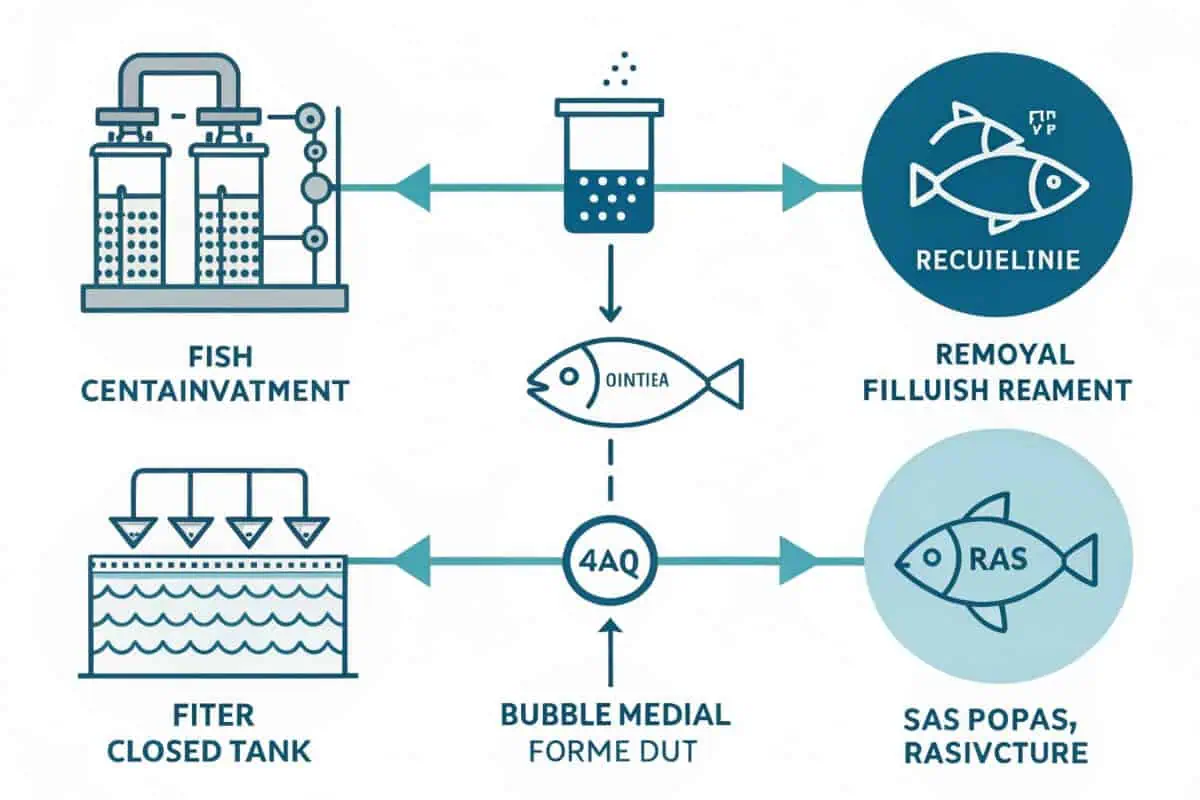
RAS Components
These four components work together in a continuous loop to keep the water clean and the fish healthy in a high-density environment. Understanding each one helps clarify how RAS functions.
1. Fish Tanks
This seems obvious, but the tanks are where the fish live. As we discussed, their design (round, rectangular, flexible) affects water flow, cleaning, and space use. The tanks need proper inlets and outlets connected to the rest of the system. At Bancy, we provide durable, customizable tanks suitable for various RAS configurations.
2. Solids Removal
Fish produce solid waste (feces and uneaten feed). This needs to be removed quickly before it breaks down and pollutes the water. Mechanical filters, like drum filters or swirl separators, are used for this. They physically screen out the solid particles from the water as it leaves the fish tanks.
3. Biofiltration
This is the heart of the water cleaning process. Fish excrete ammonia, which is toxic. The biofilter provides a large surface area (using special plastic media or beads) for beneficial bacteria to grow. These bacteria perform nitrification: converting toxic ammonia first into nitrite (also toxic), and then into nitrate (much less harmful).
4. Gas Control
Fish need oxygen to breathe, just like us. In high-density tanks, the oxygen gets used up quickly. So, RAS needs a way to add pure oxygen (using oxygen cones or diffusers) back into the water. Also, fish release carbon dioxide (CO2). Too much CO2 lowers the pH and stresses the fish. Degassing units (like packed columns) help remove excess CO2 from the water before it returns to the tanks.
These four work in sequence: Tank -> Solids Removal-> Biofiltration -> Gas Control -> Tank. Pumps keep the water moving through this loop, and often UV sterilizers or ozone treatment are added for disinfection.
| Component | Primary Function | Common Technologies Used |
|---|---|---|
| Fish Tanks | Contain the fish | Round, Rectangular, Flexible Tanks |
| Solids Removal6 | Remove solid waste (feces, uneaten feed) | Drum Filters, Swirl Separators, Screens |
| Biofiltration7 | Convert toxic ammonia/nitrite to nitrate via bacteria | Moving Bed Biofilm Reactors (MBBR), Bead Filters |
| Gas Control8 | Add oxygen (O2), remove carbon dioxide (CO2) | Oxygen Cones, Diffusers, Degassing Columns |
What is a tank culture system?
You might hear "tank culture" used alongside RAS. Is it the same thing? Or something broader? Let's clarify this term.
Tank culture simply means growing fish or other aquatic species in tanks, rather than in natural ponds or the open sea. RAS is a specific, advanced type of tank culture that heavily reuses water.
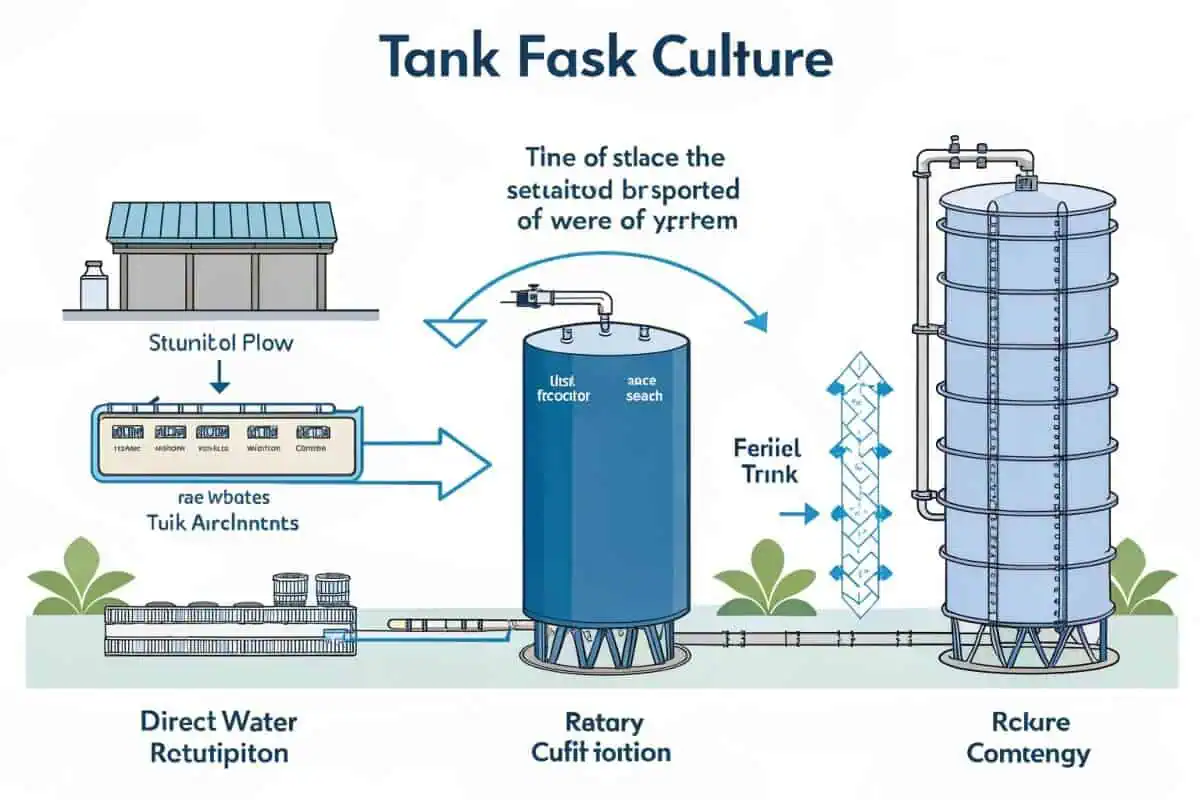
Tank Culture
Tank culture is a general term covering any aquaculture practice that uses tanks to hold the animals. It represents a move towards more controlled and intensive farming methods compared to traditional extensive pond culture.
Defining Tank Culture Broadly
At its simplest, tank culture9 could involve tanks with water flowing through them once (flow-through system10), using a lot of water but providing constant refreshment. At the other end of the spectrum is the complex RAS we've discussed, which minimizes water use through intensive treatment and recirculation. There are also systems in between, like partial reuse systems. The defining feature is the use of artificial containment (tanks) rather than earthen ponds or cages in open water.
Types of Tank Culture Intensity
We can think of tank culture on a scale:
- Flow-Through: Water enters, passes through the tank once, and exits. High water use, simple setup.
- Partial Reuse: Some water is treated and returned, mixed with new water. Reduces water use compared to flow-through.
- Recirculating Aquaculture System (RAS)11: Most water (>90-99%) is treated and reused. Lowest water use, highest complexity and control.
Advantages and Relationship to RAS
The main advantage of any tank culture system over ponds is greater control over water quality, feeding, and stock management, which often allows for higher densities. Tank culture makes it easier to monitor fish health and prevent disease outbreaks. RAS is the most intensive form of tank culture, designed specifically for maximum density and minimal environmental impact (water use). So, all RAS are tank culture systems, but not all tank culture systems are RAS. Bancy's role is providing the essential containment – the tanks themselves – which are foundational to any tank culture approach, tailored to fit flow-through, partial reuse, or full RAS needs.
| Intensity Level | Water Use | Complexity | Control Level | Typical Density |
|---|---|---|---|---|
| Flow-Through | Very High | Low | Moderate | Low-Moderate |
| Partial Reuse | Moderate | Moderate | Moderate-High | Moderate-High |
| RAS | Very Low | High | Very High | High-Very High |
Conclusion
Optimizing tank layout using systems like RAS and suitable tanks, such as Bancy's adaptable flexible options, is key for successful high-density fish farming, especially when space is limited.
-
Explore this link to gain a deeper understanding of RAS technology and its benefits for sustainable fish farming. ↩ ↩
-
Discover how RAS enhances biosecurity, making fish farming safer and more efficient by preventing disease outbreaks. ↩
-
Learn why round tanks are favored for their self-cleaning properties and efficient water circulation in RAS systems. ↩
-
Discover how rectangular tanks maximize space efficiency in fish farming, making them ideal for certain setups. ↩
-
Explore the advantages of flexible tanks, including customization and portability, which can enhance your fish farming setup. ↩
-
Discover effective solids removal techniques to keep your aquaculture system clean and efficient. ↩
-
Explore this link to understand how biofiltration works and its importance in maintaining water quality in aquaculture systems. ↩
-
Learn about gas control systems to ensure optimal oxygen levels and CO2 removal for healthy fish in RAS. ↩
-
Discover the advantages of tank culture in aquaculture, including control over water quality and fish health management. ↩
-
Learn about flow-through systems and their impact on water use and fish farming efficiency in aquaculture. ↩
-
Explore this link to understand the intricacies of RAS, its benefits, and its role in sustainable aquaculture practices. ↩